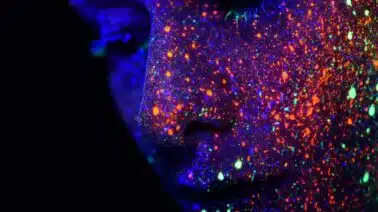It’s nearly impossible to have a conversation about technology without mentioning artificial intelligence (AI) or machine learning (ML).
These terms are cropping up everywhere in conversations about how tech is changing the world and streamlining our lives. However, AI and ML are often used interchangeably, making the difference between the two even less clear.
In this post that explores AI vs machine learning, we’ll take a step back and examine what sets these disciplines apart and exactly how they’re shaping the future of tech.
What is Artificial Intelligence?
By definition, artificial intelligence is a branch of computer science focused on building computers and machines that can imitate intelligent human behavior.
In 1956, John McCarthy coined the term “artificial intelligence” and defined it as “the science and engineering of making intelligent machines.”
What makes AI so enthralling is that it can mimic human-decision making and perform various tasks that require intelligence.
In other words, these systems can solve problems; they can classify images on Pinterest, intelligently trade stocks, and accurately maneuver autonomous vehicles.
While the majority of AI involves a computer carrying out “if-then” statements that are programmed by human engineers, machine learning is a system that’s capable of learning on its own.
How is Machine Learning Different?
When thinking about AI vs machine learning, consider that Machine Learning (ML) is a subset of AI.
While ML shares many similarities with AI, it differs because its systems can modify itself when exposed to more data. In other words, it can teach itself.
In practice, ML is a way of training algorithms to make decisions. Arthur Samuel, one of the pioneers of machine learning, defined it as a “field of study that gives computers the ability to learn without being explicitly programmed.”
Samuel and other engineers realized that teaching computers how to think –– and giving them access to mass amounts of data –– would be much more efficient than programming them how to do everything.
Access to all of this information allows algorithms to learn more about the processed information and make decisions through statistically significant patterns.
Machine Learning Today
Today, ML algorithms are widely used in applications that make recommendations based on an individual’s behavior, such as suggesting a song you might like on Spotify.
These algorithms can tell whether that song is uplifting or melancholic, and find others that have a similar quality, increasing the likelihood that the listener will enjoy it.
Machine learning is also helping computers understand the vast nuances of human language and teaching them how to respond in ways that people naturally speak.
This is part of natural language processing, which relies heavily on ML, and has led to many exciting innovations.
Undoubtedly, AI is driving and defining the technological advancements of tomorrow, which has already resulted in over 2.3 million new jobs.
AI vs Machine Learning: Developing Skills
Skills in AI and ML will continue to be at the forefront of new developments that push the capabilities of what machines can do.
Udacity offers 11 courses in artificial intelligence, spanning everything from programming and product management to deep learning and natural language processing.
Udacity’s Machine Learning Engineer Nanodegree program allows students to learn advanced machine learning techniques while gaining practical experience in deploying trained models.
If you’re intrigued by AI vs machine learning and the possibilities of these technologies, we encourage you to explore the courses offered in the School of Artificial Intelligence.



